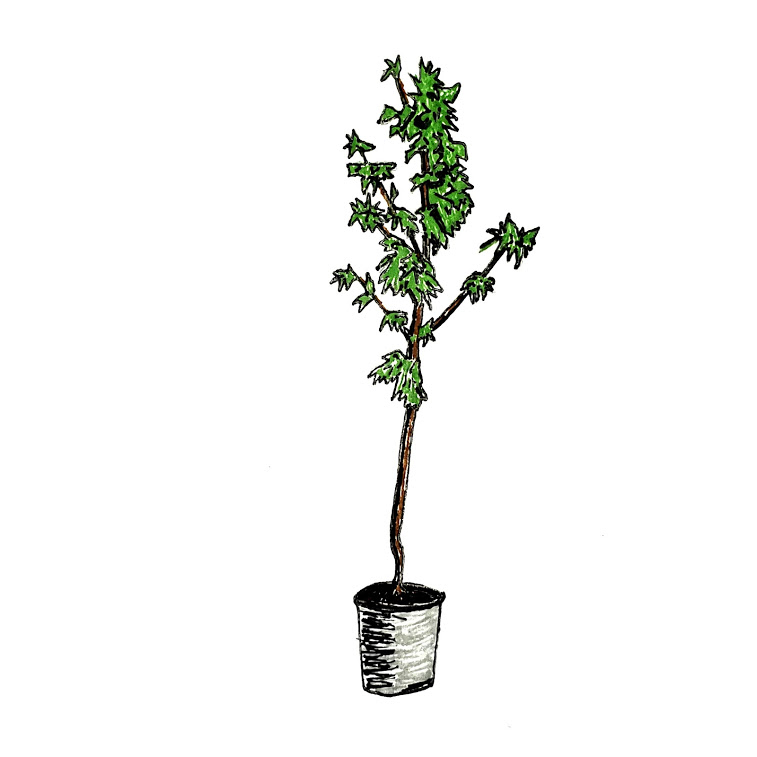Planting Containerized Trees
Here at Bob’s we stock a wide selection of containerized trees. Choosing the right tree for your landscape can be a tough choice. Are you looking for a fruit tree, shade tree, or beautiful blooms? However, once you get your tree home, planting it takes some elbow grease, but the process is quite simple.
Tree Planting Steps
Dig a hole 2 to 3 times wider than the container. The hole should have sloping sides like a bowl to allow for proper root growth. Till up the bottom of the hole and amend the soil to give your tree a jump-start as it begins to take root.
Carefully remove the tree from the container keeping the soil around the roots intact. It helps to tap the outside of the container to loosen the edge. Carefully slide the tree from the container. Don't yank the tree out of the container as this can damage the roots where they attach to the tree.
Sometimes containerized trees become root-bound or the roots look like they're about to circle the root ball. If your tree is like this, cut an X across the bottom of the root ball with a sharp knife.
Set the tree in the middle of the hole. Avoid planting the tree too deep. If the root collar sits below the top of the hole, compact some soil under the tree so that the root flare at the base of the trunk is slightly above ground level. Using some soil, secure the tree in a straight position, then fill and firmly pack the hole with the original soil, making sure there aren't any air pockets. Keep back-filling until the soil is just below the root collar.
Create a water-holding basin around the hole and give the tree a good watering. After the water has soaked in, spread protective mulch 2–4 inches deep in a 3-foot diameter area around the base of the tree, but not touching the trunk.
The soil and mulch around your trees should be kept moist but not soggy. During dry weather, generously water the tree every 7 to 10 days during the first year.
Remove any tags and labels from the tree as these will affect the tree as it grows. You may need to prune any broken or dead branches.
Mulch Volcanoes are BAD!
Finally, say NO to “mulch volcanoes”. We’ve all seen them, mulch piled up around the base of a newly-planted tree. It might look good (not really). The only purpose that it serves is killing your new tree as quickly as possible by promoting rot at the base of the tree. Ultimately, a mulch volcano will lead to planting a replacement tree.




